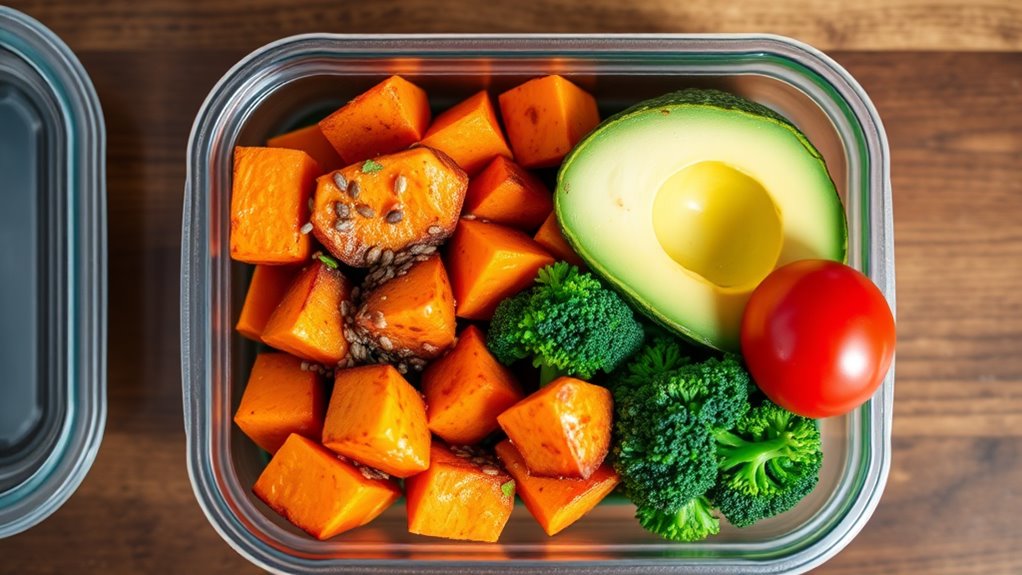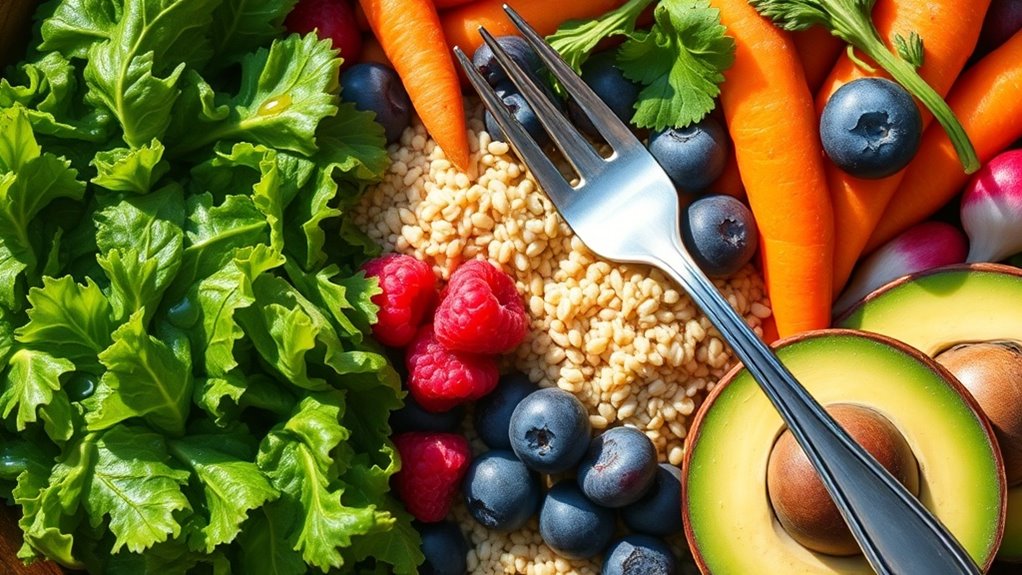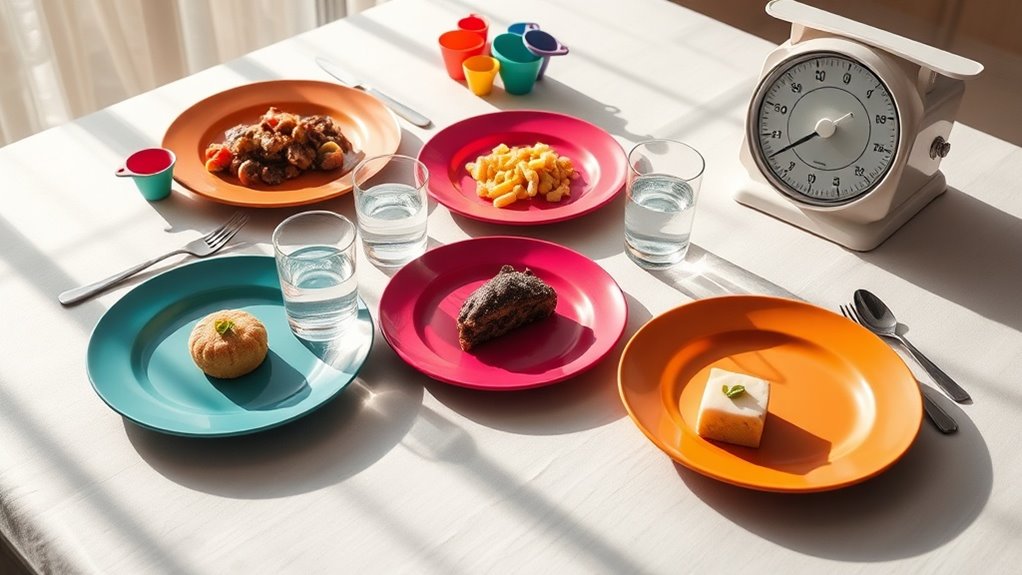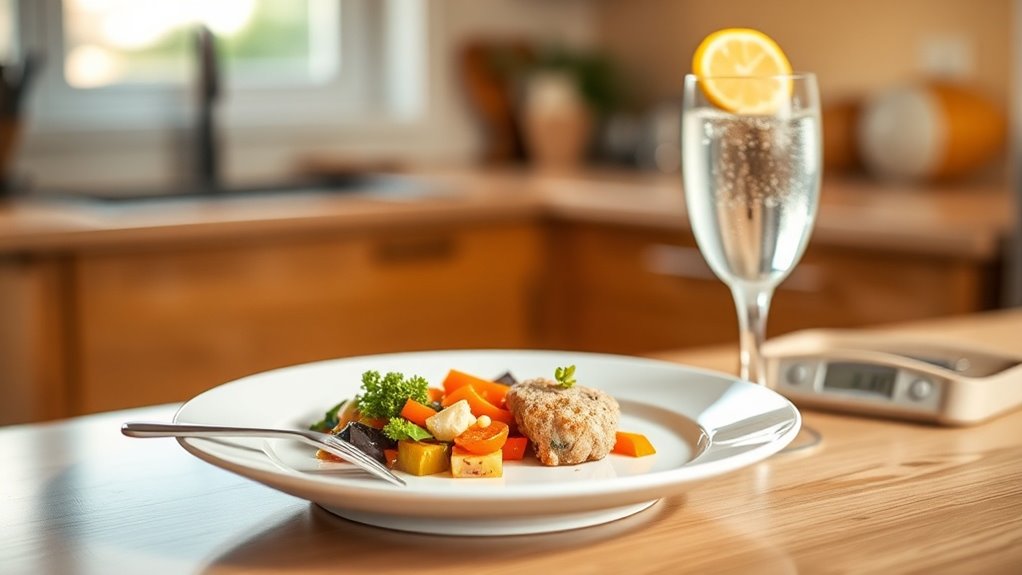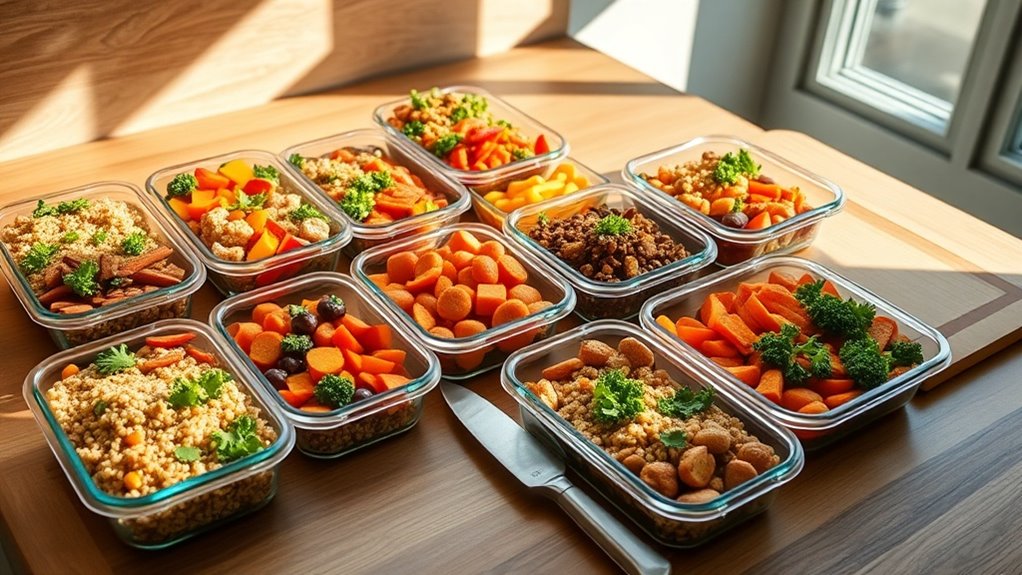This One Meal Prep Trick Can Keep You Full All Day
To stay full all day, focus on incorporating high-protein and high-fiber foods into your meal prep. Protein helps maintain muscle and enhances satiety, while fiber slows digestion, prolonging feelings of fullness. Think chicken, beans, and whole grains. Utilize clear containers for batch cooking, making meals easily accessible. This not only saves time but also prevents unhealthy snacking on busy days. Want to discover more tips for effective meal prep? Keep going!
Understanding Satiety and Hunger Signals
When you learn to recognize your hunger and satiety signals, you can make smarter choices about food that enhance your overall well-being. A helpful meal prep trick is to use smaller containers for your meals; this encourages portion control while helping you tune into your body’s signals. Incorporating high-protein and high-fiber foods into your meal prep can significantly enhance your feeling of fullness throughout the day.
The Role of Protein in Meal Prep
Including sufficient protein in your meal prep not only bolsters your body’s muscle maintenance but also enhances satiety, keeping hunger at bay for longer periods.
Incorporating sources like chicken, beans, or Greek yogurt can help you achieve your protein goals. Aim for about 20-30 grams of protein per meal.
This approach makes it easier to stick to your nutrition plan and manage cravings effectively. Additionally, pairing protein with healthy fats can further enhance satiety and support overall health.
How Fiber Keeps You Full Longer
Fiber plays a crucial role in keeping you full longer, and it comes in two main types: soluble and insoluble.
Soluble fiber absorbs water and forms a gel-like substance in your gut, slowing digestion, while insoluble fiber adds bulk to your stool and helps with regularity.
Incorporating high-fiber foods like beans, whole grains, and vegetables into your meals can enhance satiety and support your meal prep goals. For instance, foods like leafy greens are not only low in calories but also packed with fiber that aids digestion and promotes fullness.
Soluble vs. Insoluble Fiber
While both soluble and insoluble fiber play crucial roles in your diet, their effects on satiety can vary significantly.
Here’s how they differ:
-
Soluble Fiber: Dissolves in water, forming a gel-like substance; it slows digestion and keeps you feeling full longer.
-
Insoluble Fiber: Adds bulk to your stool, promoting regularity but has a less pronounced satiating effect.
-
Combination: Eating both maximizes fullness and digestive health.
High-Fiber Foods Examples
To boost your satiety and keep hunger at bay, choosing high-fiber foods is an effective strategy.
Incorporate foods like lentils, black beans, quinoa, chia seeds, and whole grains into your meals.
Also, fruits like apples and pears, and vegetables such as broccoli and carrots, can significantly enhance fiber intake.
These options expand in your stomach, helping you feel fuller longer.
Effective Meal Prep Strategies
When you utilize effective meal prep strategies, you not only save time during the week but also set yourself up for healthier eating habits.
Here are three practical tips:
- Plan Ahead: Dedicate a specific day for planning your meals.
- Batch Cook: Prepare large portions of staple foods to last all week.
- Use Clear Containers: Organize meals in transparent containers for easy access.
These strategies keep you on track and ready to eat well! Additionally, batch cooking can help you avoid unhealthy choices by ensuring you have nutritious meals readily available throughout the week.
Balancing Macronutrients for Maximum Fullness
Balancing your macronutrients effectively can significantly enhance your feeling of fullness throughout the day. Aim for a combination of protein, healthy fats, and complex carbohydrates in your meals.
Protein keeps you satiated longer, while fats and fiber from carbs slow digestion. This synergy helps regulate hunger hormones, ensuring you stay satisfied and energized. Incorporating nutrient-dense foods into your meal prep can further support satiety and overall health.
Meal prepping these balanced meals can make it easier to maintain this approach.
Tips for Staying Hydrated Throughout the Day
Staying hydrated is crucial for maintaining your energy and fullness throughout the day.
To help you remember to drink enough water, try setting reminders on your phone or keeping a water bottle within arm’s reach.
Incorporating hydrating food choices like fruits and vegetables can also boost your overall fluid intake while adding essential nutrients to your meals.
Hydration Reminder Techniques
Have you ever wondered how simple strategies can boost your hydration throughout the day?
Try these techniques to stay on track:
- Set reminders on your phone to drink water regularly.
- Use a marked water bottle to track your intake.
- Pair hydration with meals to make it a habit.
These methods can significantly improve your hydration, enhancing your overall health and energy levels.
Hydrating Food Choices
To complement your hydration efforts, incorporating hydrating food choices into your diet can make a significant difference.
Foods like cucumbers, watermelon, and oranges contain high water content, aiding in overall hydration.
Additionally, leafy greens and soups are excellent options.
